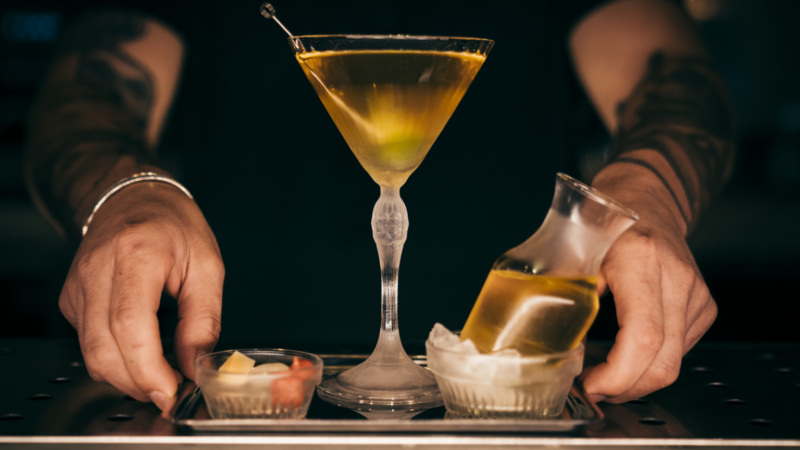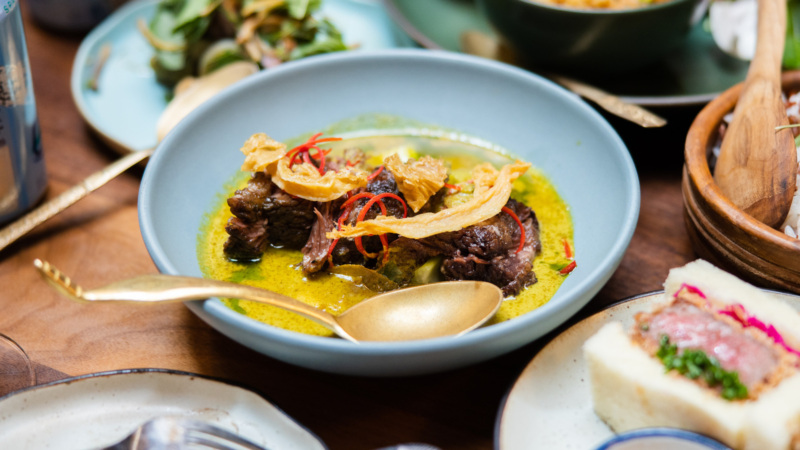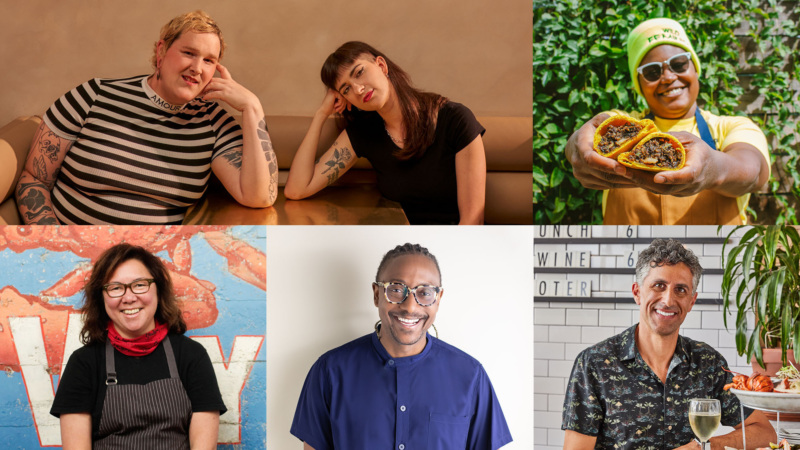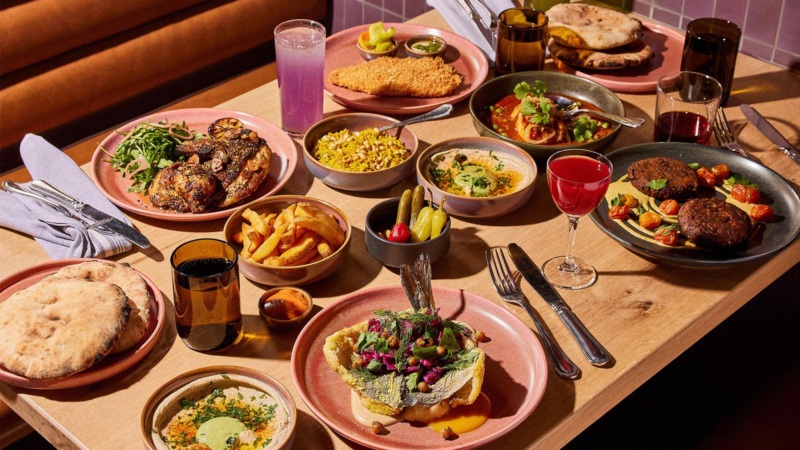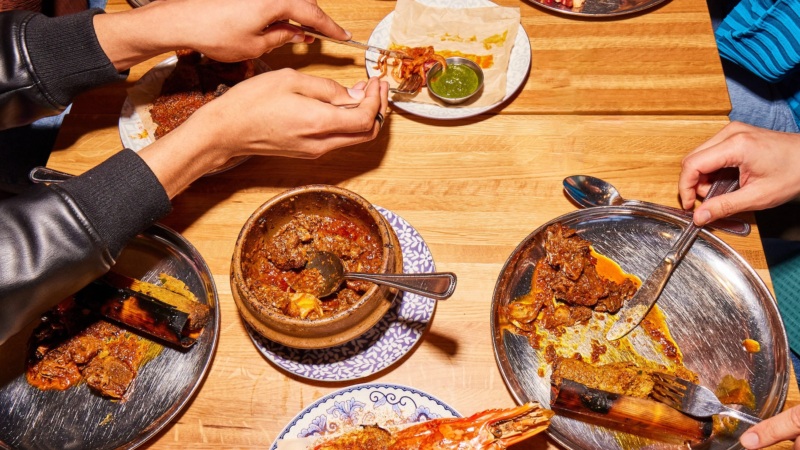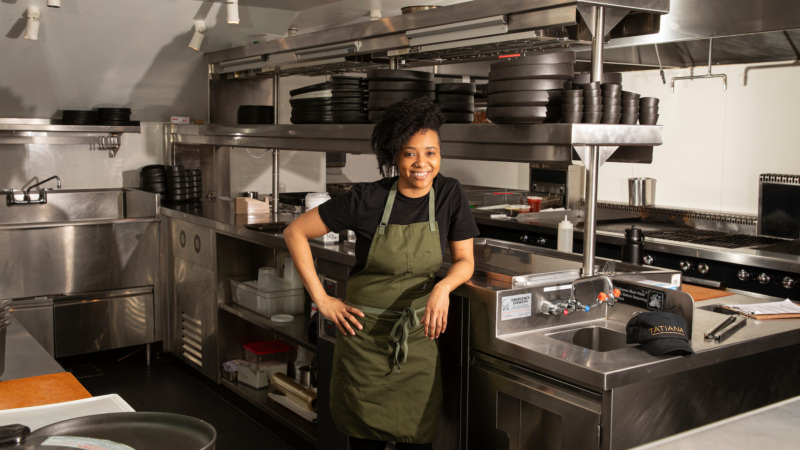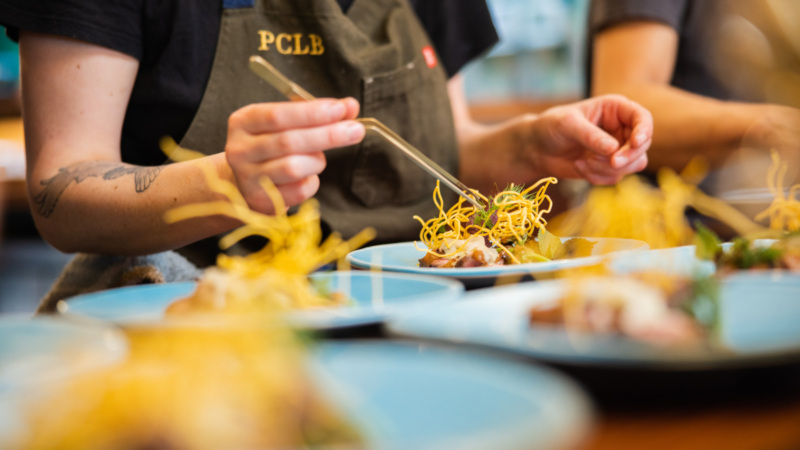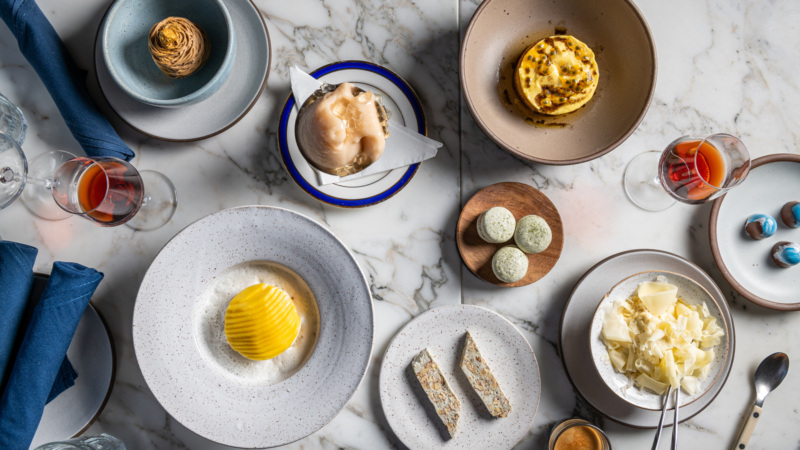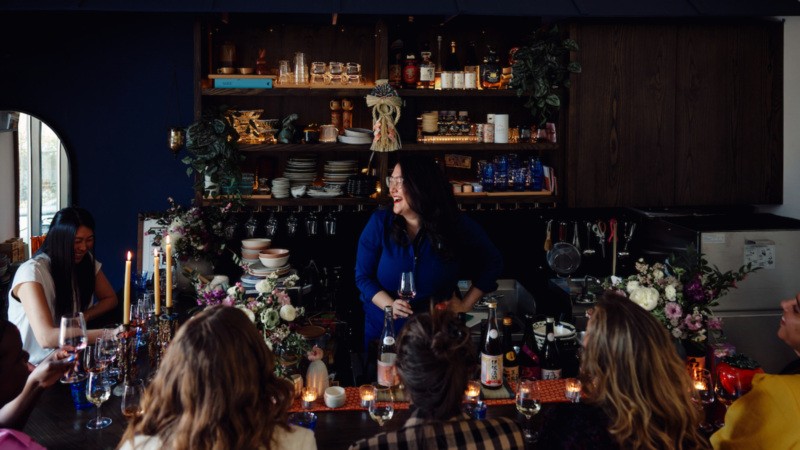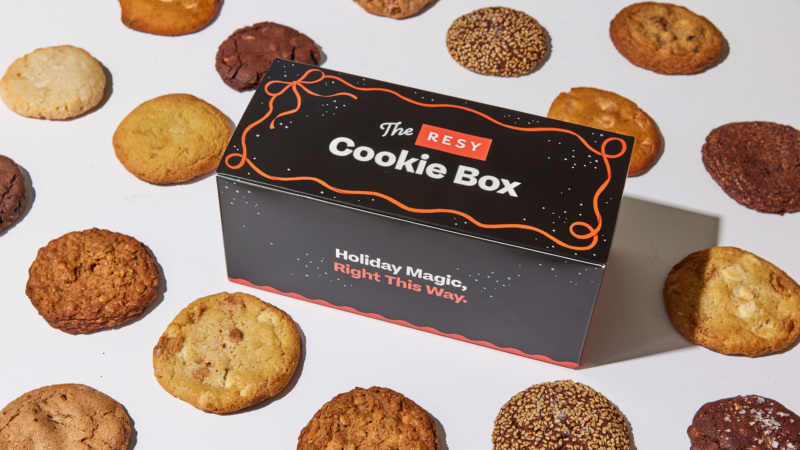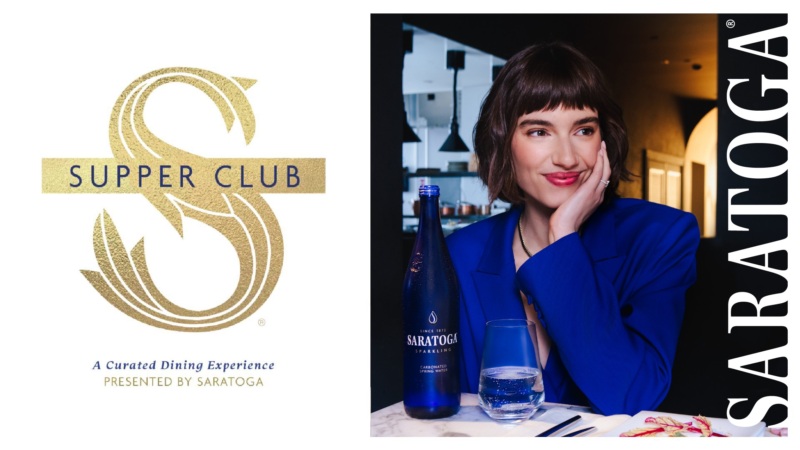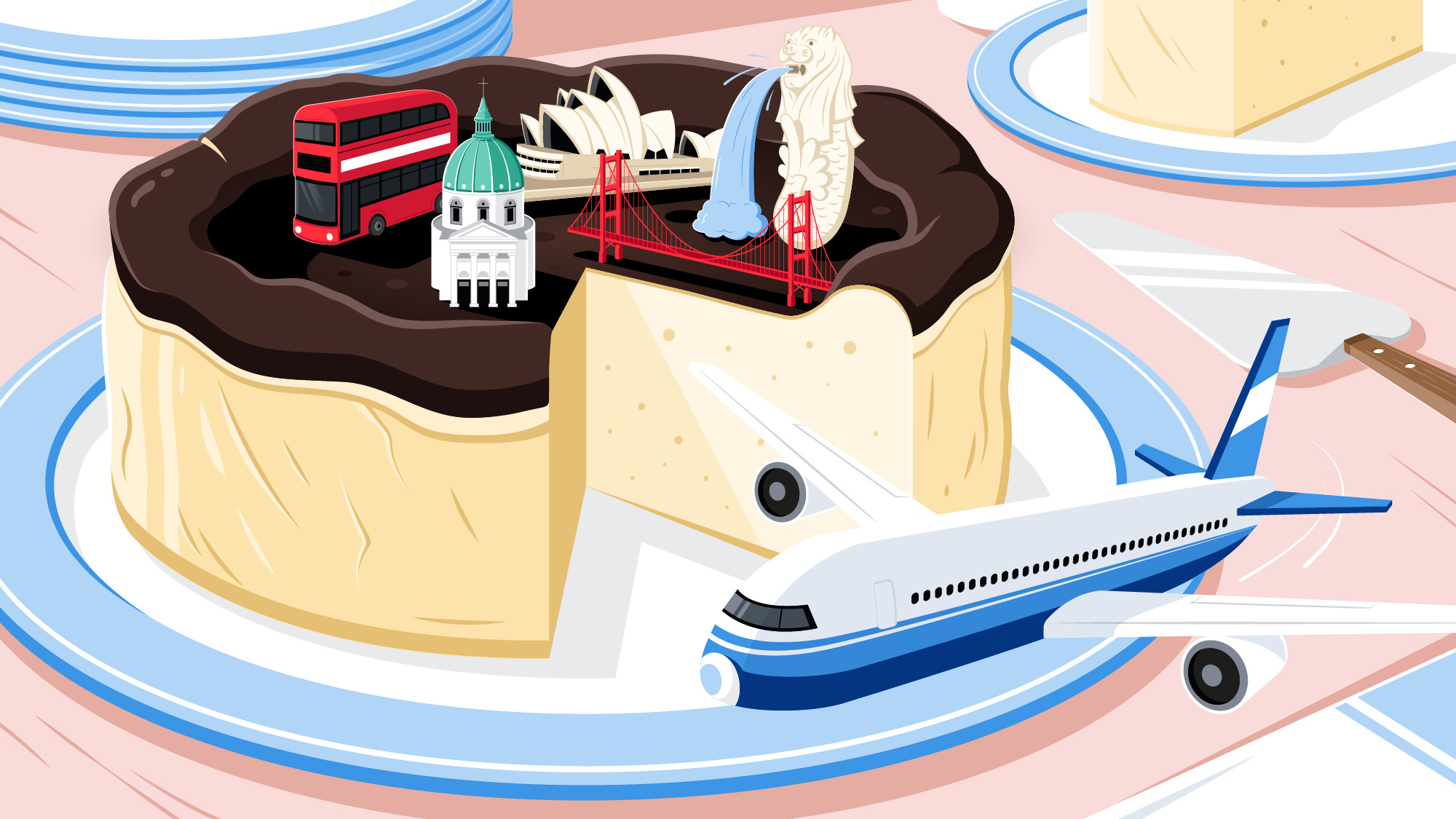
Resy Spotlight National London
How Basque Burnt Cheesecake Took Over The World
The night was still young in the Basque country, and the American woman couldn’t believe what she was hearing. She was here for a specific reason – for a single, specific thing – and she had just learned that there was no way she could have it. “What do you mean you’ve sold out?” she asked, her vacation clearly ruined. A stranger, no doubt, to San Sebastián’s peculiar micro-economies of supply and demand – this is a town where a slice of its best tortilla must be reserved in advance – she simply couldn’t reconcile the two facts staring her in the face. One: that this was undeniably the most famous dish in the city. And two: they only made a finite number per day.
The year was 2014; the setting was La Viña, a pintxo bar and restaurant in the old town that for all its other excellent dishes – don’t miss the fried hake – may as well, as far as covetous tourists cared, have become a factory producing a single item: its legendary cheesecake.
Today the world knows it as Basque burnt cheesecake, or San Sebastian cheesecake, but this is unfair, and incorrect. It is La Viña’s dish, invented in the early 1990s after the bar’s owners – brothers Eladio and Antonio Rivera, and their wives Carmen and Conchi – had embarked on a grueling process of R&D in search of tarta de queso perfection. In its original state, it’s not all that burnt: toasted might be a more accurate description, the color palette more a symphony of browns, blacks, and golds than the uniformly blackened style that seems all the rage now, all around the globe.
But that abundantly caramelized exterior does represent a notable break from cheesecake tradition, as does the absence of any kind of biscuit (cookie) base, an innovation – per a 2018 interview with Santiago Rivera, La Viña’s current owner – that makes for a markedly superior end result. “The biscuit base doesn’t generally bring anything special. If you use it, you run into stumbling blocks, but if on the contrary, you do away with it the cheesecake will be much more creamy and soft; you’ll enjoy it more.”
New York-style cheesecake advocates may take issue with that conclusion, but there’s no disputing that something about the La Viña method has resonated in the 30 years that followed its creation. The driving force has always been the internet, raising awareness of San Sebastian as a food paradise; connecting bloggers; allowing Instagrammers to document the city in excruciating detail; drawing millions of eyeballs to viral recipes from Bon Appétit and Nigella Lawson.
Today, we are approaching Peak Cheesecake. You can get a La Viña-style slice practically anywhere in the world, from London to the Bay Area, from Istanbul to Tokyo. Basque cheesecake was named 2021’s Flavor of the Year in the New York Times last year; as pandemic-induced shelter-at-home orders have dragged on across the globe, the number of domestic cooks trying their hand at the relatively simple recipe have made it, in the words of one Instagram user, “the banana bread of lockdown 3.0.”
The sheer ubiquity of Basque cheesecake now disguises what has in fact been an astonishingly rapid rise to global renown: really, it has only been mainstream famous for a year, maybe 18 months max. That it became an instantly recognizable icon reveals just how fast the food world’s evolutionary cycle is spinning today.
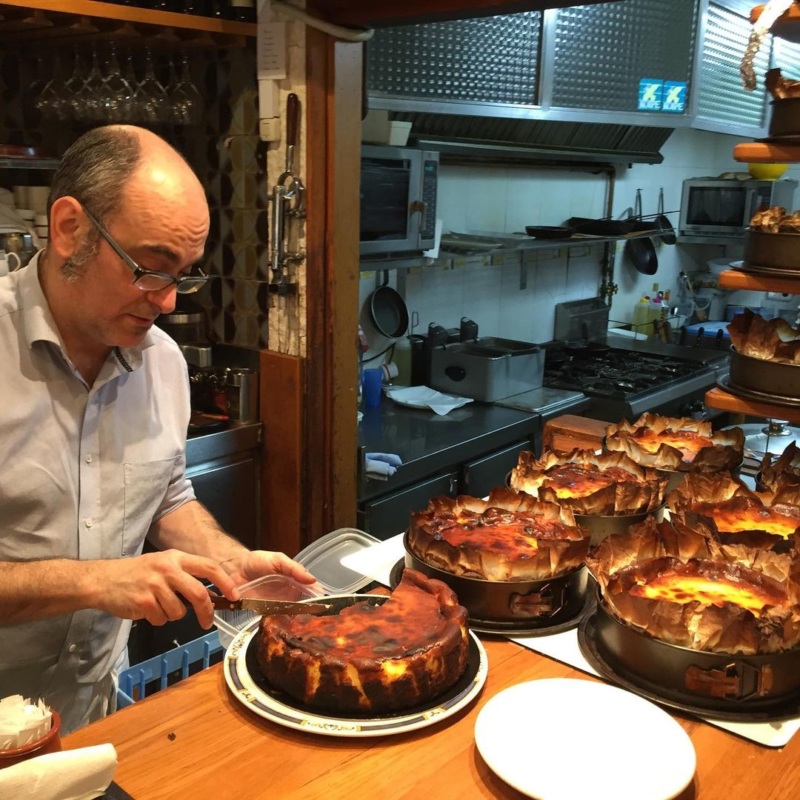

***
It was 2017, and Dave Beran was enduring his own version of the agony of the Riveras. For the dessert menu at his new restaurant, Dialogue, he wanted to offer a faithful recreation of the La Viña OG, but nothing quite seemed to work.
Interviewed in the Los Angeles Times years later, Beran, who now runs Pasjoli, would admit all of his problems emerged from a cheffy tendency to “overthink” the process. And so, in his words, he “started over at zero,” mentally putting himself “in the position of the La Viña baker making 20 cheesecakes in a tiny pintxos bar kitchen with one oven.” At this point, the penny started to drop; three months later, his homage was ready to serve to customers.
Across the world, in 2018 London, a version of the La Viña original would become similarly iconic. Brat, a restaurant inspired by the grill-houses of the Basque country, opened in Shoreditch and instantly captured the capital’s attention. By the end of the year it had racked up a slew of best newcomer awards, too, as well as the dubious distinction of being in the Times’ instantly infamous Beyond Porridge and Boiled Mutton feature on the new London cooking.
Like Dave Beran, Brat’s Tomos Parry had fallen in love with La Viña when visiting the Basque country; in his case, because of its existence in a small subset of desserts “that can sit comfortably on the end of a restaurant menu, or be served at a bar with a coffee or digestif.” Climb the panelled staircase at Brat, walk through the front door, and right there, on the counter, opposite the front desk, is a tableau that would become just as adored as Parry’s whole turbot or anchovy flatbread: a proud display of La Viña-style cheesecakes, crusts impeccably burnt.
If we were dividing Basque cheesecake’s lifespan up into slices, this particular chunk – 2017-19 – would be The Hipster Era. La Viña’s OG rendition had been making waves in its native town for the best part of 25 years before London-based early adopters like Lurra started offering a take on its creation in 2015; in Istanbul, B.BLOK bakery had produced the first slice of its jealously-guarded version a year earlier. Alex Raij, of New York’s Txikito and La Vara, got there even earlier, as far back as 2008, although she admits that at the time, “no one really noticed.”
The burnt cheesecake was definitively, defiantly disorderly, a mishmash of things that shouldn’t have worked in its favor but which somehow did.
By the tail-end of the 2010s, though, the dish had actively become “cool,” in the sense of attracting covetous glances – and camera lenses – from the global food hypebeast brigade. In Kuala Lumpur, Malaysia, the Tokyo Restaurant launched what one blogger would label “the darling of the Malaysian dessert scene”; in Japan, restaurant-made and domestic versions would become mainstays of food Instagram. Like the beautifully laminated croissants turned out by Lune in Melbourne – subsequently imitated in third-wave coffee shops and achingly hip bakeries across the world – the Basque cheesecake became a calling card, its invocation a subtle nod denoting inclusion into the borderline Masonic world of food nerd culture.
Unlike the croissants at Lune, though, the cheesecake was definitively, defiantly disorderly, a mishmash of things that shouldn’t have worked in its favor but which somehow did. Black is perhaps second only to blue in the hierarchy of colors that food should not be; active burned-ness is seldom a quality our palates seek out. And yet there is something compelling about a Basque cheesecake, something that draws the eye even as it repulses it. One interpretation is that the dish is the quintessence of ugly deliciousness as defined and popularized by David Chang – a philosophy which gained traction as a rejection of the ludicrously prettified, pastel-hued excesses of mid-twenty-teens Instagram.
But plenty of baked goods are beige and unlovely to look at whilst packing serious flavor, and so there must be more to the cheesecake’s appeal. Perhaps it’s that its sheer simplicity is its greatest draw. As it has grown in popularity, a distinctive cheesecake aesthetic has grown alongside it, one that takes the dish’s inherent dualities – black and white, seared yet virginal, rich yet ethereal – and revels in the contrasts they present. It’s not pretty, but it is eye-catching all the same. It plays just as well with millennial pink rhubarb as monochrome serviceware. In Instagram terms, it’s a win-win, the ultimate case of having your cake and eating it too.
The journey to social media dominance has been eventful, although not always happy. As so often with these mini-crazes – see: the Starbucks cronut – something can get lost in translation as dishes go viral, as simulacra stack on simulacra and copies are copied from copies. When Bon Appétit published Molly Baz’s Basque Burnt Cheesecake in January 2019, it confirmed the dish’s new trajectory, towards the sort of food culture that takes its culinary inspiration not from obscure blogs but glossy publications and evening TV shows. Tellingly, three misconceptions that are now endemic appear in Baz’s three-line introduction to her version: one, it is generically “Basque” rather than idiosyncratically La Viña’s; two, that “this is the cheesecake that wants to get burnt”; and, three, that “this is the cheesecake that’s impossible to mess up.”
Oversimplifications like these are a source of frustration to Tavel Bristol-Joseph, the pastry chef at Kalimotxo, who has gained no little local renown for his classicist spin on the dish, which first hit the Austin, TX scene in 2019. He acknowledges the dish’s appeal may lie in its apparent straightforwardness but also preaches the need for genuine precision: “It doesn’t take much – it’s only six ingredients. But what makes it difficult is that it’s so simple that it has to be perfect. Your timing, your temperature has to be on point, or else you’re just going to get curds.”
And there were a whole lot more curds coming our way. By the end of the decade, the cheesecake would have transcended isolated restaurants and become a mainstay in foodie capitals the world over, from Portland (at Urdaneta), to Brooklyn (at Victor), to Copenhagen’s Hart Bageri and Melbourne’s Marion. And far from a traveller’s jealously guarded secret, the dish would become a mainstay in mainstream food media: Tomos Parry’s recipe would appear in The Guardian and The Sunday Times; Tavel Bristol-Joseph would be named one the nation’s Best New Chefs by Food + Wine, which published his take on the dish for public consumption. In October last year, Nigella Lawson published Cook Eat Repeat, which included her take on a version cooked by Nieves Barragán Mohacho at Sabor in London – a dish which she would then go on to broadcast to a prime-time TV audience on the accompanying BBC TV show.
Watching this with somewhat mixed feelings was the writer Ed Smith, who decided in late 2019 to include a take on the La Viña cheesecake in his upcoming cookbook Crave. At the time, he says, “I distinctly remember thinking that it was London foodie cliché at that point, and that it would probably be popular generally by mid 2021, but not wholly overexposed.”
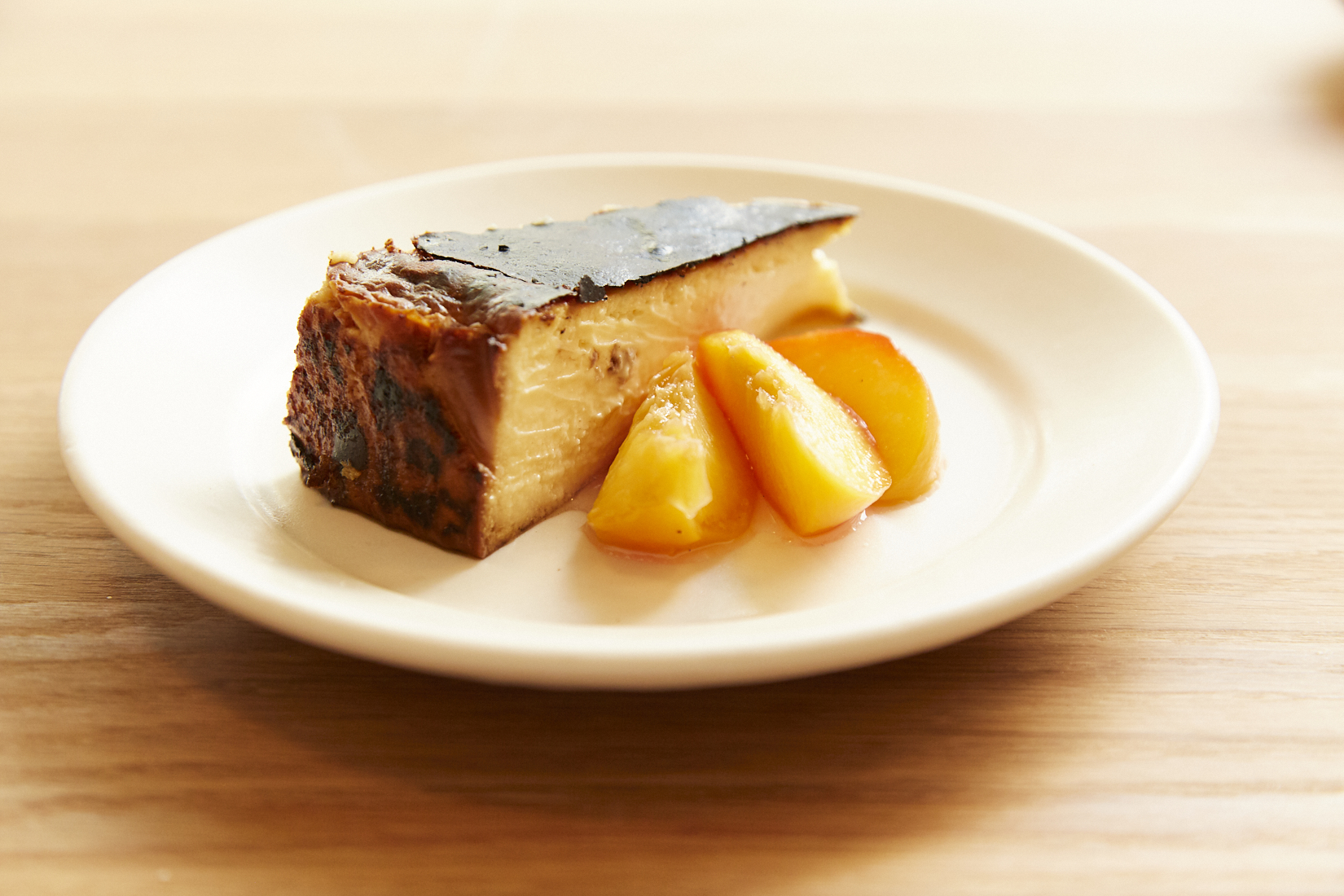
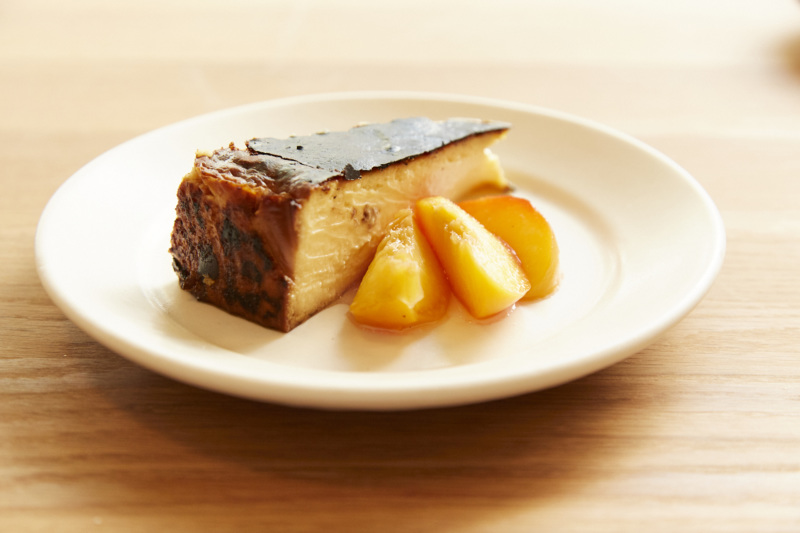
Like so many of us, the one thing Smith probably couldn’t have seen coming in December 2019 was a global pandemic. But he points to COVID-19 as a key factor in driving Basque cheesecake even further into the mainstream, as bored domestic cooks cast around for something to make while their banana bread cooled.
And the fact remains that a pretty good La Viña-style cheesecake is within the grasp of even the most remedial cook. More than that: even a pretty bad La Viña-style cheesecake is still a dopamine bomb of delicious fatty cream cheese, a case study of the good things that can happen when the Maillard reaction kicks into gear. This relatively limited downside made it an excellent lockdown project for home cooks.
But Smith argues the Basque cheesecake also emerged as an answer to a whole host of new, coronavirus-adjacent problems faced by restaurants. If the traditional pastry section was in crisis before the pandemic, a victim of headcount reductions and cost-cutting initiatives, then the Basque cheesecake, as it gained broader attention, must have seemed like a panacea: a short list of ingredients, a low-frills presentation, a set of flavors that could act as a blank canvas for a hyper-seasonal garnish: truly, a dessert for all seasons. But then COVID was only exacerbating pre-existing issues, namely the imperiled status of pastry chefs in many restaurant markets. To Smith’s point, a “populist” dessert that was relatively easy for a commercial kitchen to prepare was always going to be irresistible to budget-stretched owners.
Even a pretty bad La Viña-style cheesecake is still a dopamine bomb of delicious fatty cream cheese.
For one of the dessert’s earliest champions outside Spain, there’s also the role played by good old-fashioned hype. “That’s the London way, isn’t it?” asks Brett Redman, whose Borough Market restaurant Elliot’s has been offering a version of the cake for more than half a decade. “You see it on Instagram, or other people talk about it a lot more. If it’s not new, it’s not interesting. These things blow up, they die down, someone else will open something new, and that’ll be the thing for a little while.”
But Redman’s understandably jaded perspective after five-plus years in the cheesecake game overlooks two things that make La Viña’s creation an exception to this rule. For one thing, it’s not just London that has fallen under its thrall: there is Basque cheesecake to be had at Humble Bakery in Sydney, at Cúrate in Asheville and Breadbelly in San Francisco. At Paparch, in Singapore, they’ll sell you a whole one for forty-nine Singapore dollars – or at least they would if you got to the front of the two-month wait-list.
The second thing that is different about this particular cycle of hype and bust is that not only does it show no sign of abating, it has in fact started mutating. At first, the tweaks were subtle, focused on amping up the inherent tanginess that experts claim derives from the local brand of cream cheese, San Millan, used in the original. At Brat, they added goat’s curd; at Txikito, it was goat’s cheese; at Breadbelly, it was Cowgirl Creamery’s unctuous Mt Tam.


In time, though, anything became fair game: at Cavalier, in Sydney, it was slices of black truffle; at Teaspoon of Love, in Singapore, it was Da Hong Pao tea; at Calere, in Melbourne, it was caramelized pineapple. In the Bay Area – arguably Ground Zero of Basque cheesecake experimentation – it is not unusual to see ingredients like matcha, ube, black sesame, or salted egg yolk feature in La Viña-inspired creations. It used to be said that when a dish had grown this widespread, it had gone viral; but there’s something more akin to meme culture about this. Each appropriator has added a personal, idiosyncratic twist.
That customization might reach its pinnacle in Basuku, among the most celebrated of all of California’s new cheesecake mavens. What started as a lockdown project for Charles Chen, an Oakland-based food consultant, has become a full-on business — with a sold-out order book and distribution across the Bay Area.
But Chen’s Proustian first bite of Basque-style cheesecake did not come rammed hugger-mugger up to the bar in La Viña – as San Francisco Chronicle restaurant critic Soleil Ho tells it, it was at a Lawson’s convenience store in Japan. And the dish does not take him back to the rolling hills that encircle San Sebastian, but rather Hokkaido, home to his father’s side of the family, an area renowned for dairy production. Japan has a storied cheesecake heritage of its own; alongside Roman-style burnt ricotta cake, Japanese-style souffle cheesecake is hotly tipped to be the “next” big thing in the cheesecake world, even if its higher skill threshold limits its runaway appeal.
Tellingly, Chen refers to his products as “Japanese-style Basque cheesecakes”; their existence along the continuum separating Basque cheesecake, Roman burnt ricotta tart, New York cheesecake, and Japanese souffle cheesecake is a reminder that labels only get us so far when talking about food in an increasingly connected, increasingly globalized, endlessly inventive world. At Big Jo, in North London, they have even started offering a Basque burnt cheesecake that incorporates the very biscuit base that Santiago Rivera’s forefathers first toiled to remove. Follow the circumference of any cheesecake around far enough, and you always end up back at the beginning.
George Reynolds is a food writer based in London. Follow him on Instagram. Follow Resy, too.






